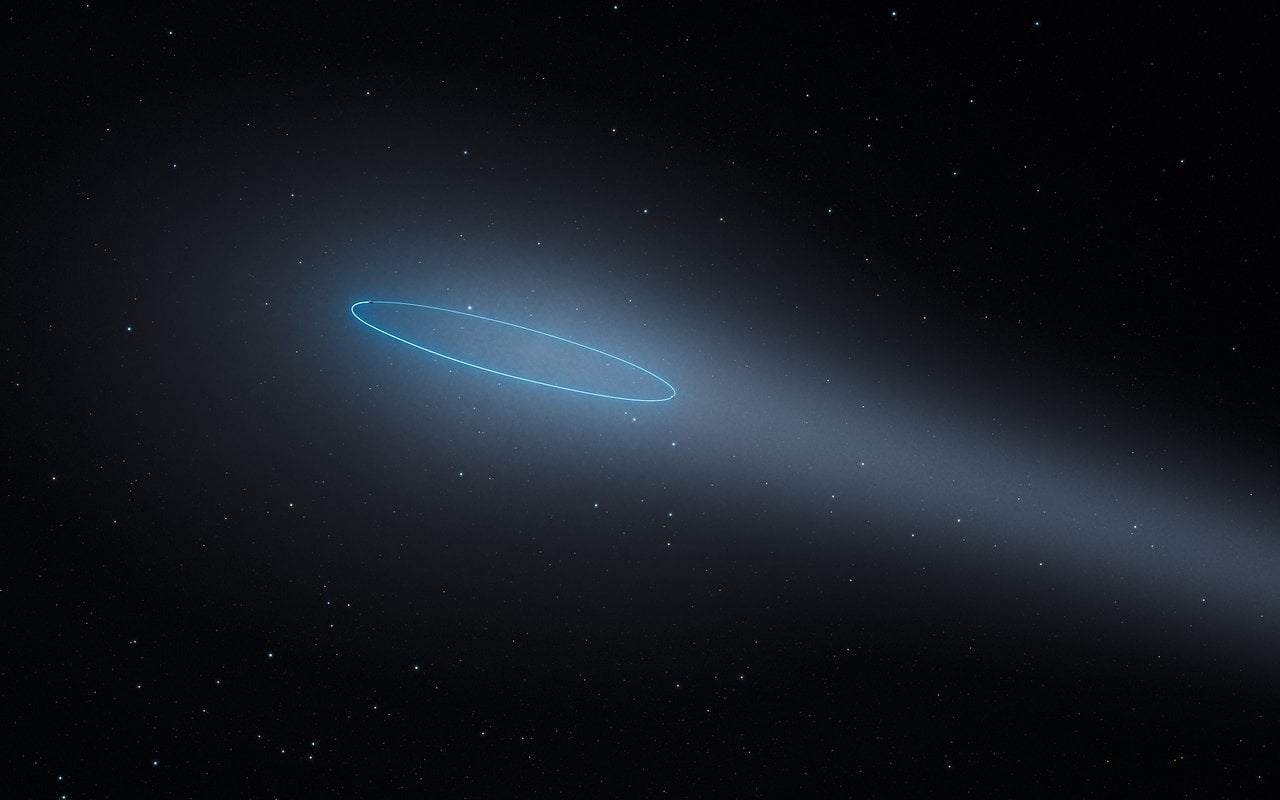In 1990, the NASA/ESA
Hubble Space Telescope
was deployed into Low Earth Orbit (LEO). As one of NASA's Great Observatories - along with the
Compton Gamma Ray Observatory
, the
Chandra X-ray Observatory
, and the
Spitzer Space Telescope
- this instrument remains one of NASA's larger and more versatile missions. Even after twenty-seven years of service, Hubble continues to make intriguing discoveries, both within our Solar System and beyond.
The latest discovery was made by a team of international astronomers led by the
Max Planck Institute for Solar System Research
. Using Hubble, they spotted a unique object in the
Main Asteroid Belt
- a binary asteroid known as 288P - which also behaves like a comet. According to the
team's study
, this binary asteroid experiences sublimation as it nears the Sun, which causes comet-like tails to form.
The study, titled "
A Binary Main-Belt Comet
", recently appeared in the scientific journal
Nature
. The team was led by
Jessica Agarwal of the
Max Planck Institute for Solar System Research, and included members from the
Space Telescope Science Institute
, the
Lunar and Planetary Laboratory
at the University of Arizona, the
Johns Hopkins University Applied Physics Laboratory
(JHUAPL), and the University of California at Los Angeles.
Using the Hubble telescope, the team first observed 288P in September 2016, when it was making its closest approach to Earth. The images they took revealed that this object was not a single asteroid, but two asteroids of similar size and mass that orbit each other at a distance of about 100 km. Beyond that, the team also noted some ongoing activity in the binary system that was unexpected.
As Jessica Agarwal explained in a Hubble
press statement
, this makes 288P the first known binary asteroid that is also classified as a main-belt comet. "We detected strong indications of the sublimation of water ice due to the increased solar heating - similar to how the tail of a comet is created," she said. In addition to being a pleasant surprise, these findings are also highly significant when it comes to the study of the Solar System.
Since only a few objects of this type are known, 288P is an extremely important target for future asteroid studies. The various features of 288P also make it unique among the few known wide asteroid binaries in the Solar System. Basically, other binary asteroids that have been observed orbited closer together, were different in size and mass, had less eccentric orbits, and did not form comet-like tails.
The observed activity of 288P also revealed a great deal about the binary asteroids past. From their observations, the team concluded that 288P has existed as a binary system for the past 5000 years and must have accumulated ice since the earliest periods of the Solar System. As Agarwal
explained
:
[caption id="attachment_137290" align="aligncenter" width="580"]
Image depicting the two areas where most of the asteroids in the Solar System are found: the Main Asteroid Belt and the Trojans. Credit: ESA/Hubble, M. Kornmesser
[/caption]
Naturally, there are many unresolved questions about 288P, most of which stem from its unique behavior. Given that it is so different from other binary asteroids, scientists are forced to wonder if it merely coincidental that it presents such unique properties. And given that it was found largely by chance, it is unlikely that any other binaries that have similar properties will be found anytime soon.
"We need more theoretical and observational work, as well as more objects similar to 288P, to find an answer to this question," said Agarwal. In the meantime, this unique binary asteroid is sure to provide astronomers with many interesting opportunities to study the origin and evolution of asteroids orbiting between Mars and Jupiter.
In particular, the study of those asteroids that show comet-like activity (aka. main-belt comets) is crucial to our understanding of how the Solar System formed and evolved. According to contrasting theories of its formation, the Asteroid Belt is either populated by planetesimals that failed to become a planet, or
began empty
and gradually filled with planetesimals over time.
In either case, studying its current population can tell us much about how the planets formed billions of years ago, and how water was distributed throughout the Solar System afterwards. This, in turn, is crucial to determining how and where life began to emerge on Earth, and perhaps elsewhere!
Be sure to check out this animation of the 288P binary asteroid too, courtesy of the ESA and Hubble:
 Universe Today
Universe Today
